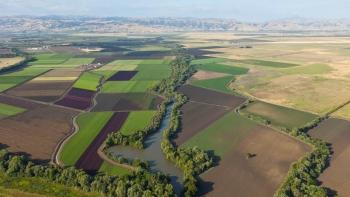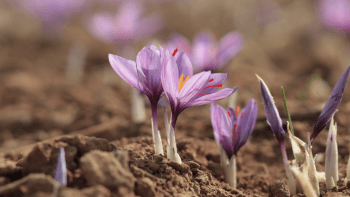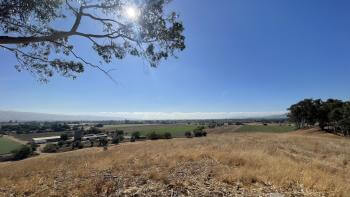Community Connections: Julie Morris

In January 2022, Julie Morris was appointed as County Agricultural Liaison, a Cooperative Extension position supported by the Santa Clara County Agricultural Division and University of California Agriculture and Natural Resources. Guided by the Santa Clara Valley Agricultural Plan, (written in partnership between Santa Clara County and the Open Space Authority) Morris is working to promote and protect agriculture in the region. With 30 years of experience in ranching, journalism, and food marketing, she is well-qualified to support the County’s efforts to conserve agricultural viability and productivity.
“Keeping working lands working [is a top priority for Santa Clara County.] Ultimately, I want to see agriculture grow and become a bigger part of the County’s economic community.”
Building relationships with local producers is an important part of the job, because she can then provide farmers and ranchers with information and opportunities that support their work. “I want to learn about and listen to the challenges they are facing, and I want them to know that there are programs that can help them.”
Through this process, Morris is helping bridge the gap between regulators, policy makers, and local farmers and ranchers. “Sometimes either side of the industry is misunderstood by the other, which can make it difficult to work together,” Morris says.

Over the last 30 years, the Santa Clara Valley has lost over 21,000 acres of productive farmland. Once known as the Valley of Hearts Delight, Morris notes that protecting the region’s rich history of orchards and agriculture fosters an important sense of identity for the communities that live, work and play in the South Bay. “We want people in the community to know that agriculture in Santa Clara Valley is alive and well...[it] is part of the County’s fabric, and people need to know that it is very much viable.”
Promoting the Agricultural Plan also provides opportunities for the community to learn about the importance of the region’s agriculture, both economically and environmentally. Morris notes that the environmental benefits of agriculture are essential for community health and wellbeing. “There really can be a symbiotic relationship between agriculture and the environment, and we want to encourage the practices that support it,” she adds.

Another element of Morris’ work is educating farmers about how to receive financial compensation for using sustainable practices, including organic farming and spreading compost, and for keeping their land as an agricultural operation, rather than selling it for development.
As outlined in the Santa Clara Valley Agricultural Plan, sustainable farming operations have a variety of environmental benefits -- farmland globally can sequester as much as 570 million metric tons of carbon per year, according to one estimate, contributing to critical climate mitigation. Beyond carbon sequestration, farmland can also promote healthy soils, increase biodiversity, and even protect habitats.
At the individual level, Morris points out that people can support the region’s agriculture through education (for example, being aware of local decision-making regarding agriculture) and buying locally sourced food, which supports small businesses and family farms.

Click here to learn more about Morris’ work to protect and promote agriculture in the Santa Clara Valley. If you have any questions, feel free to reach out to Morris at jfmorris@ucanr.edu.



